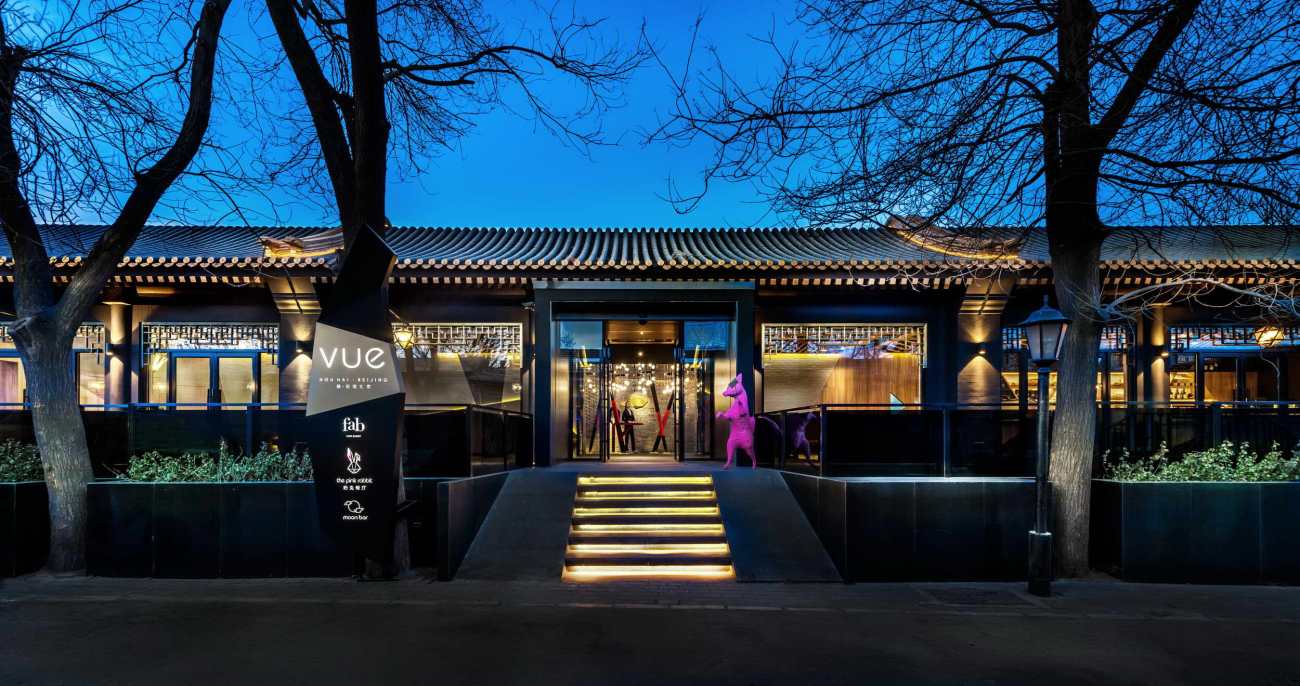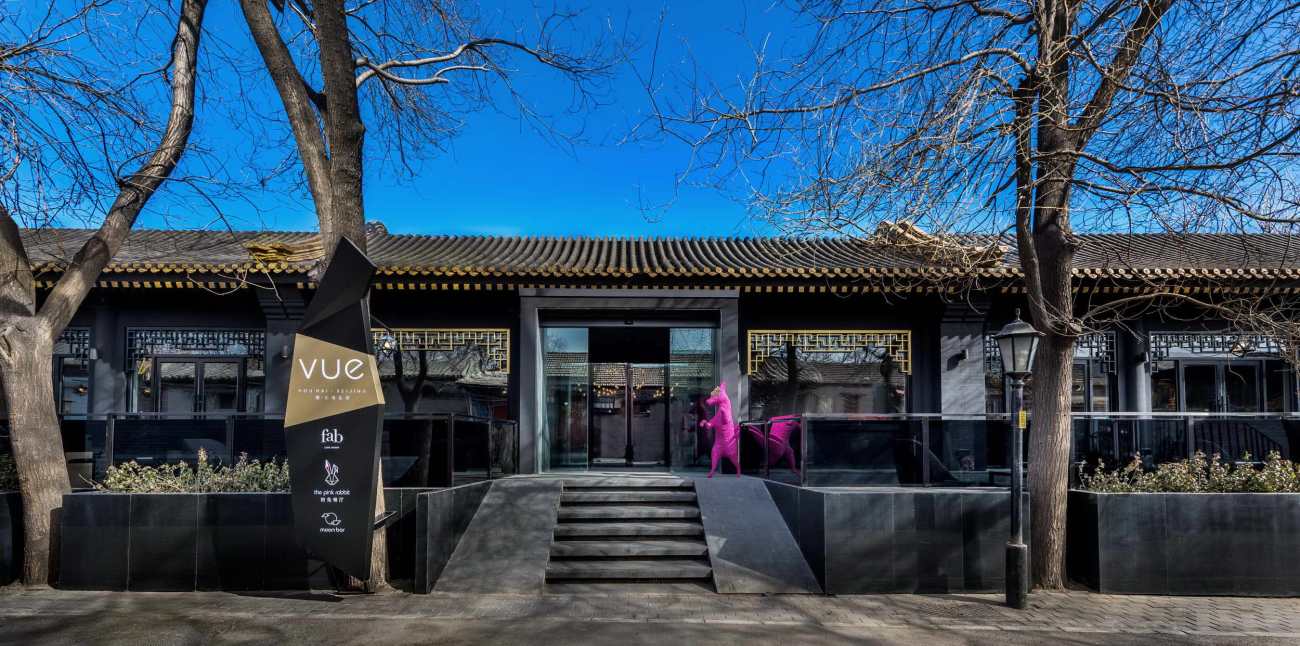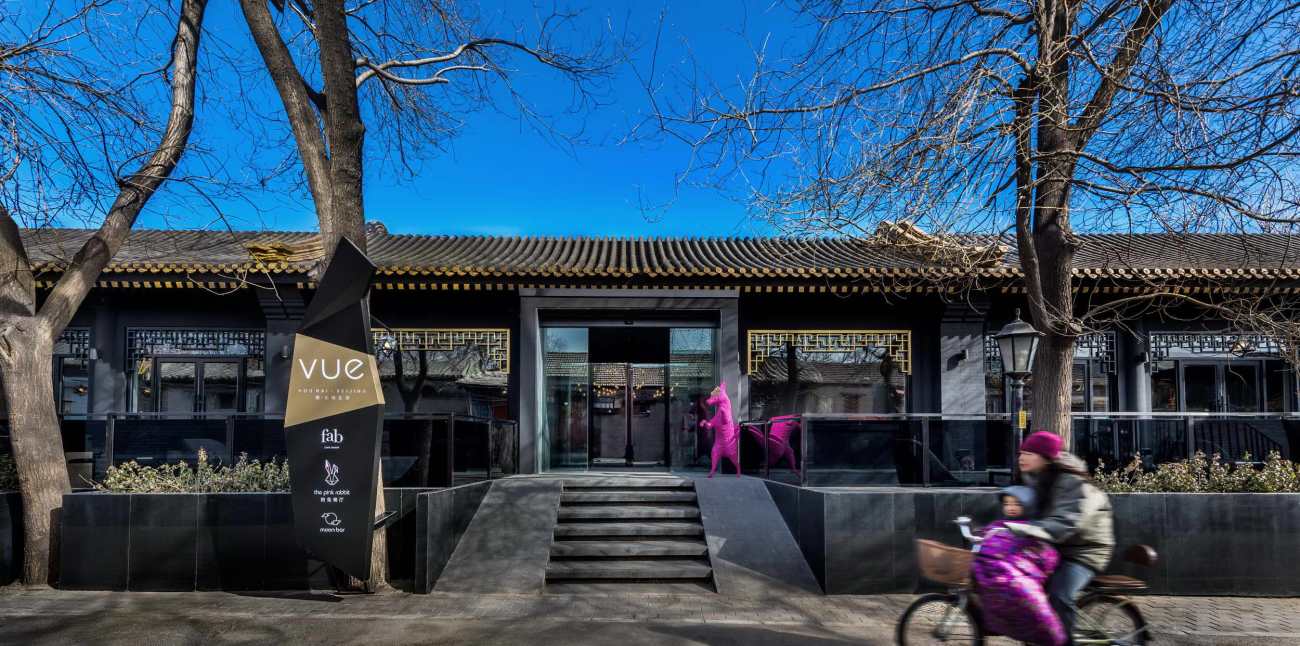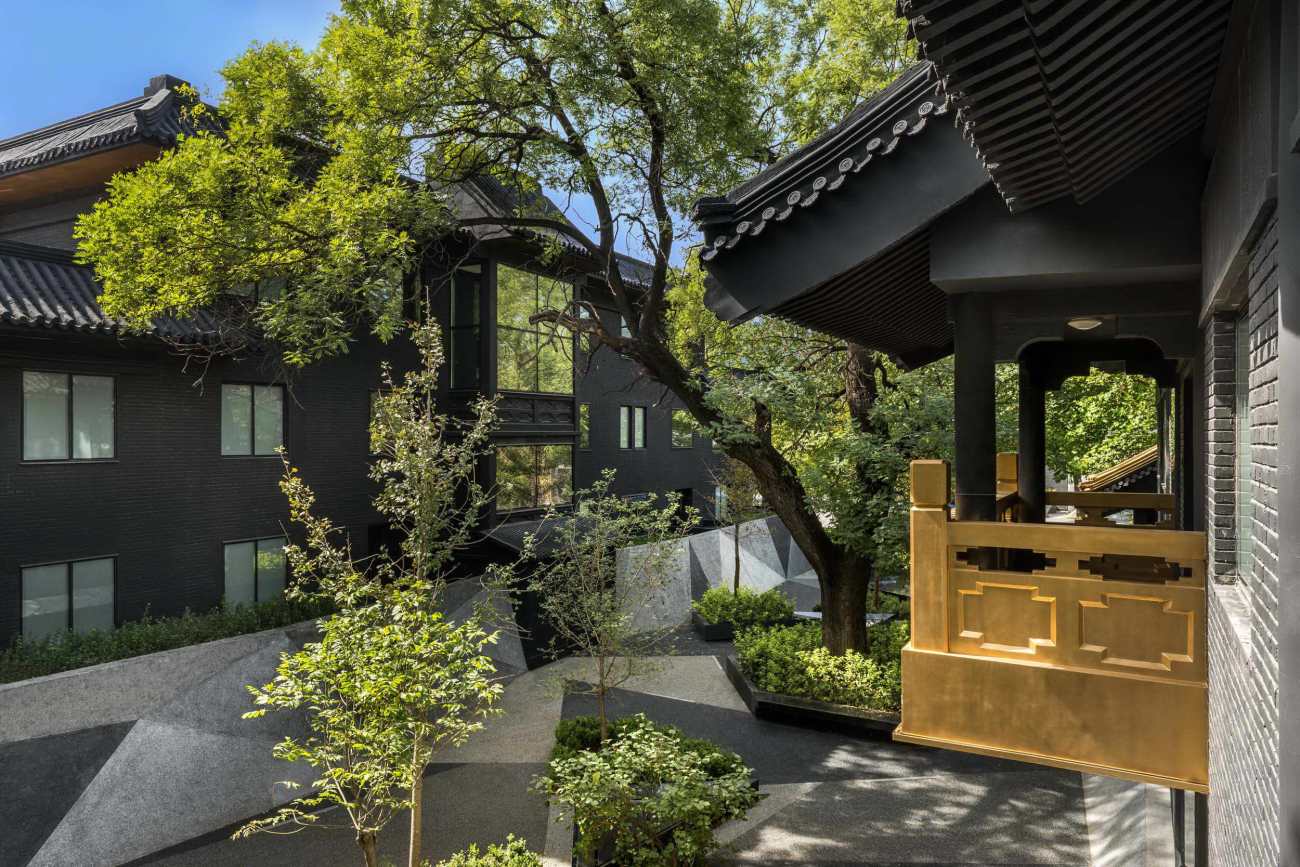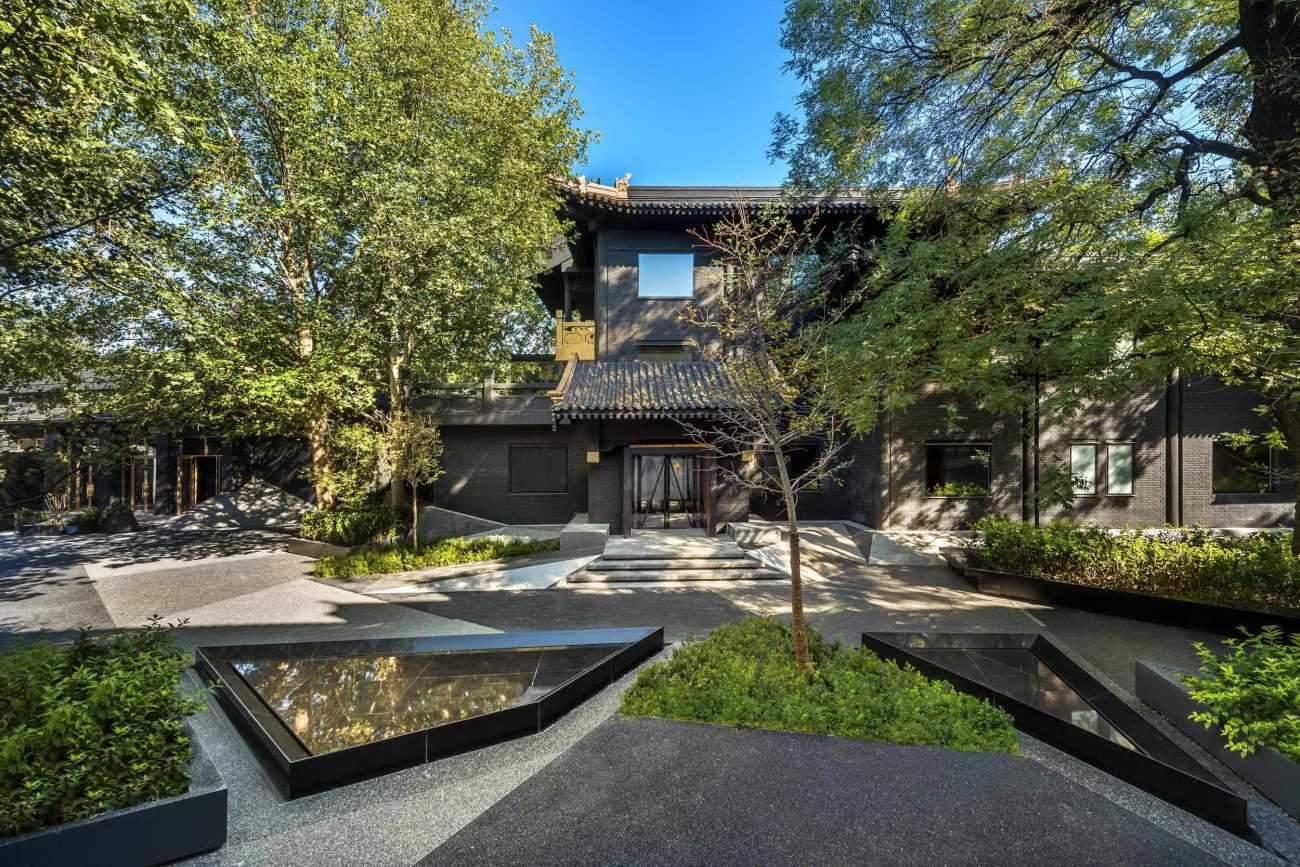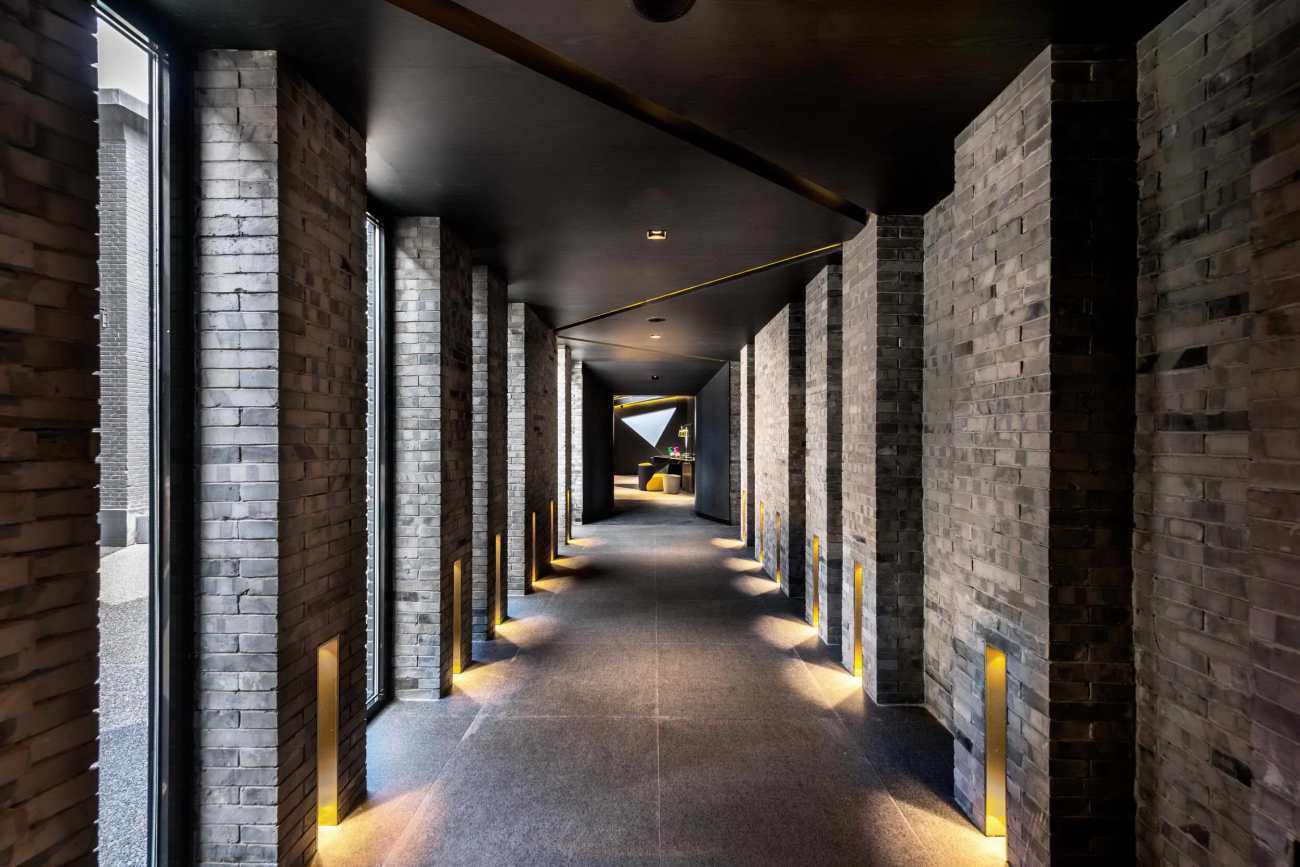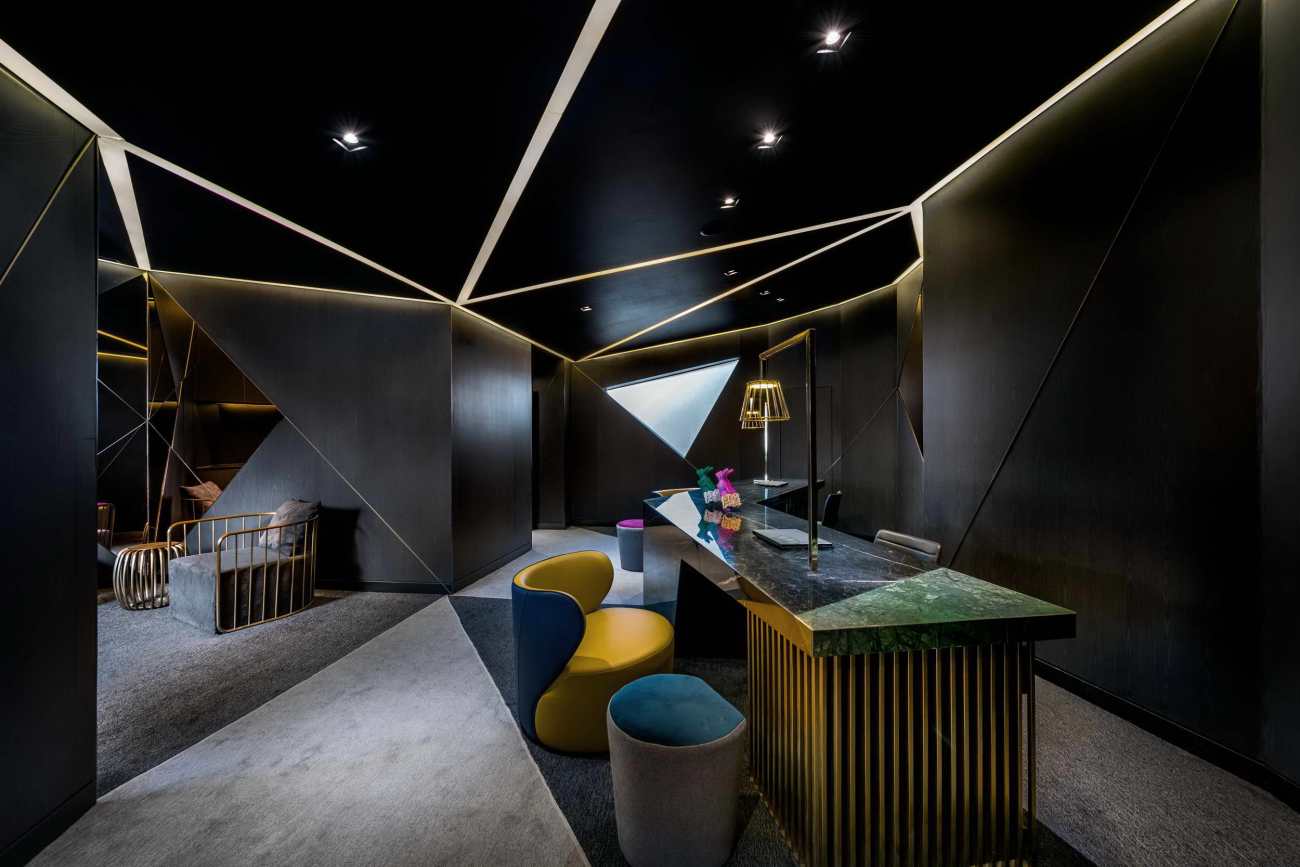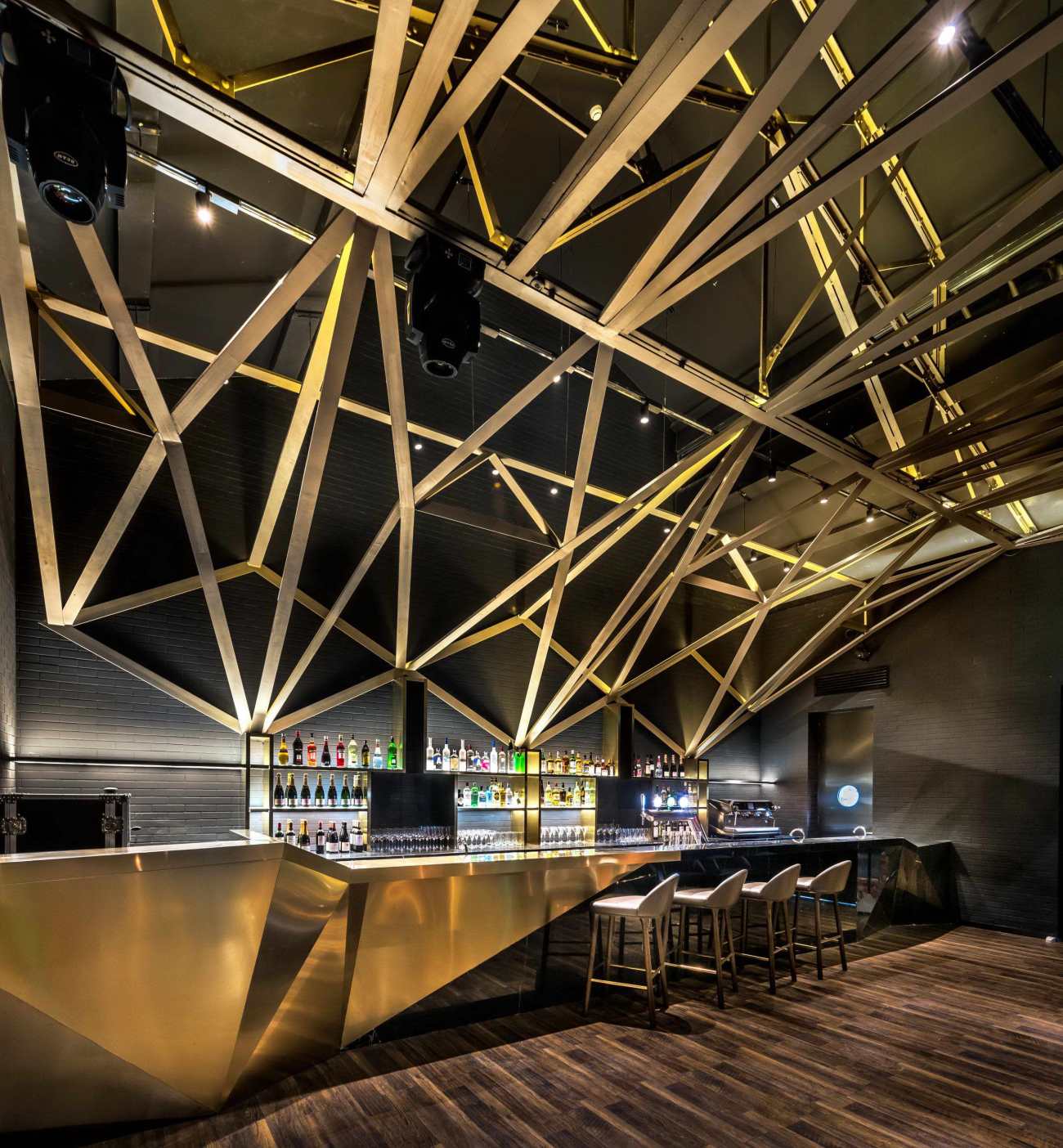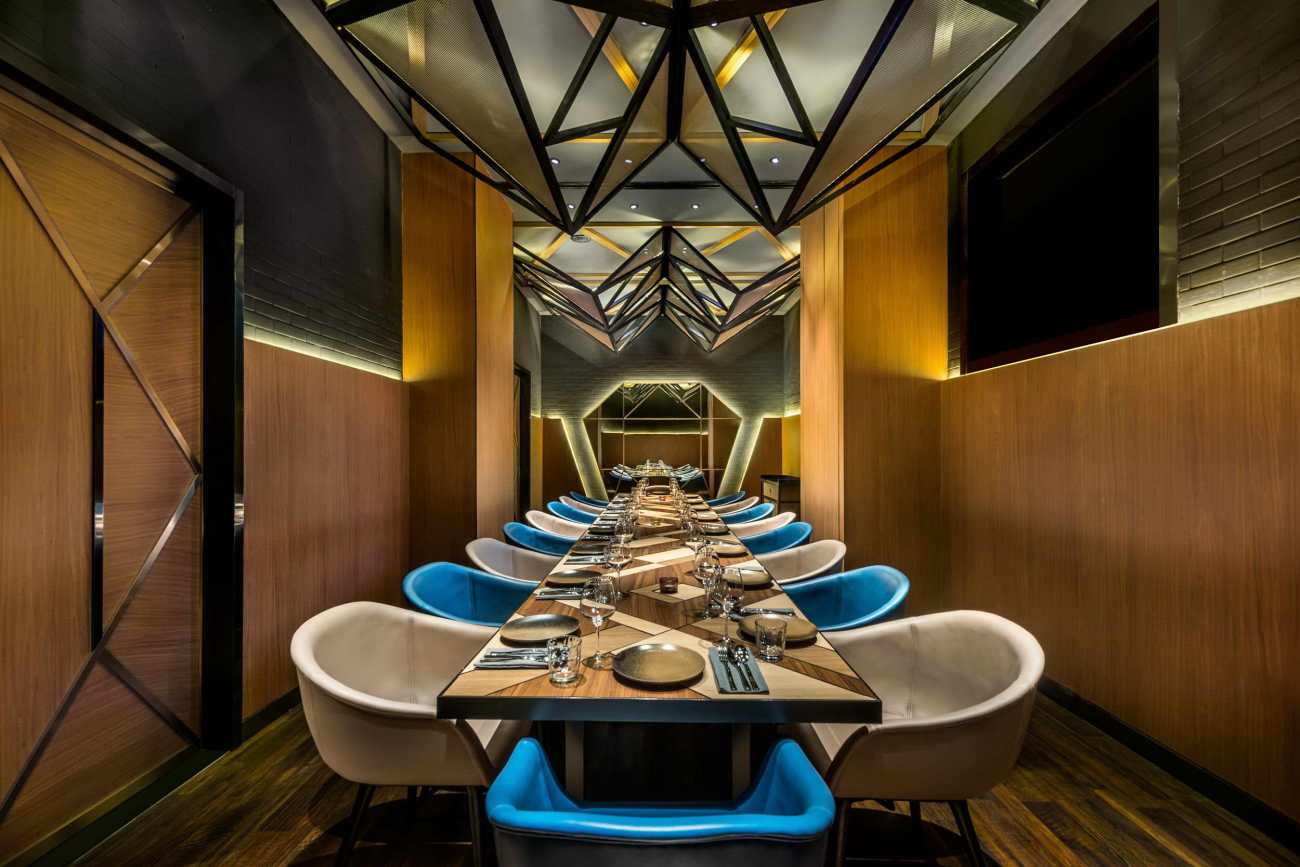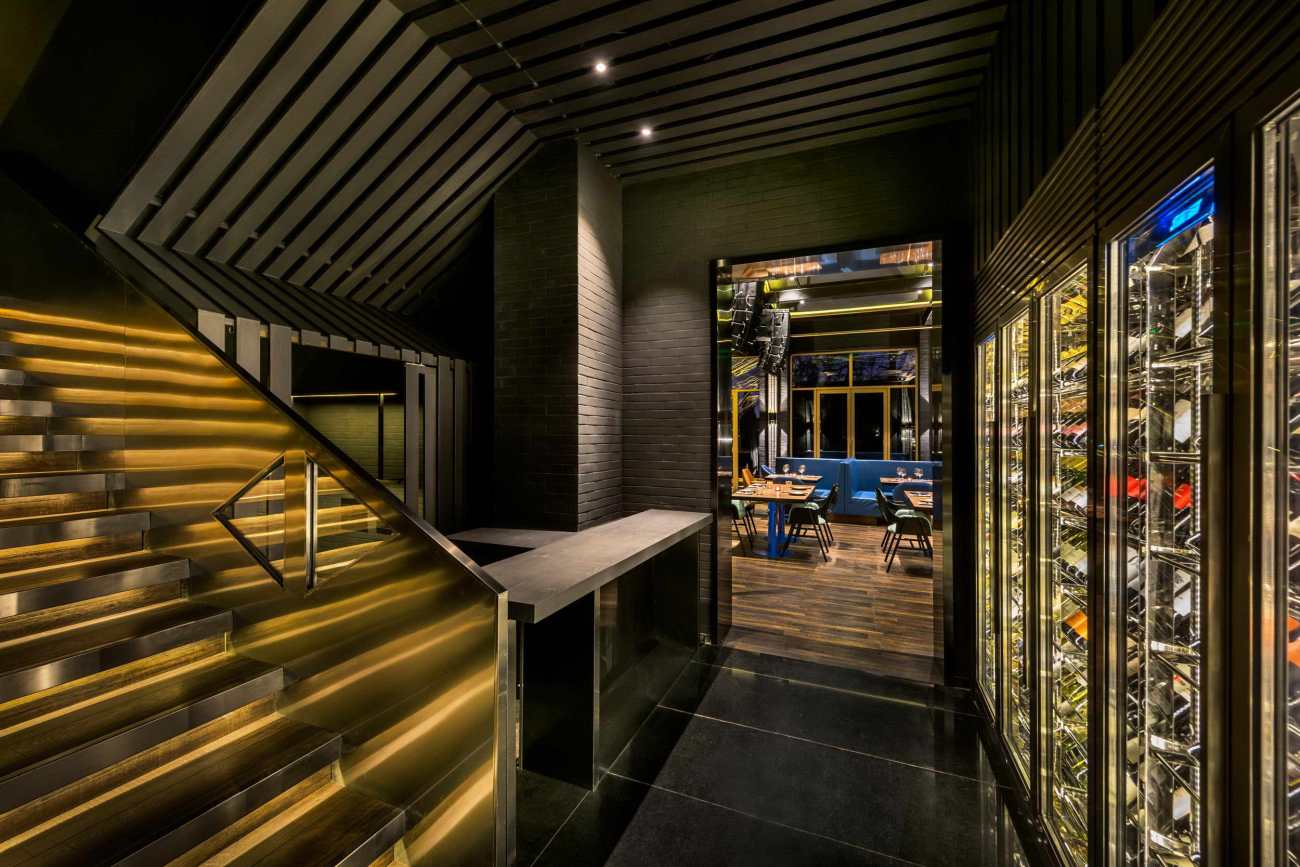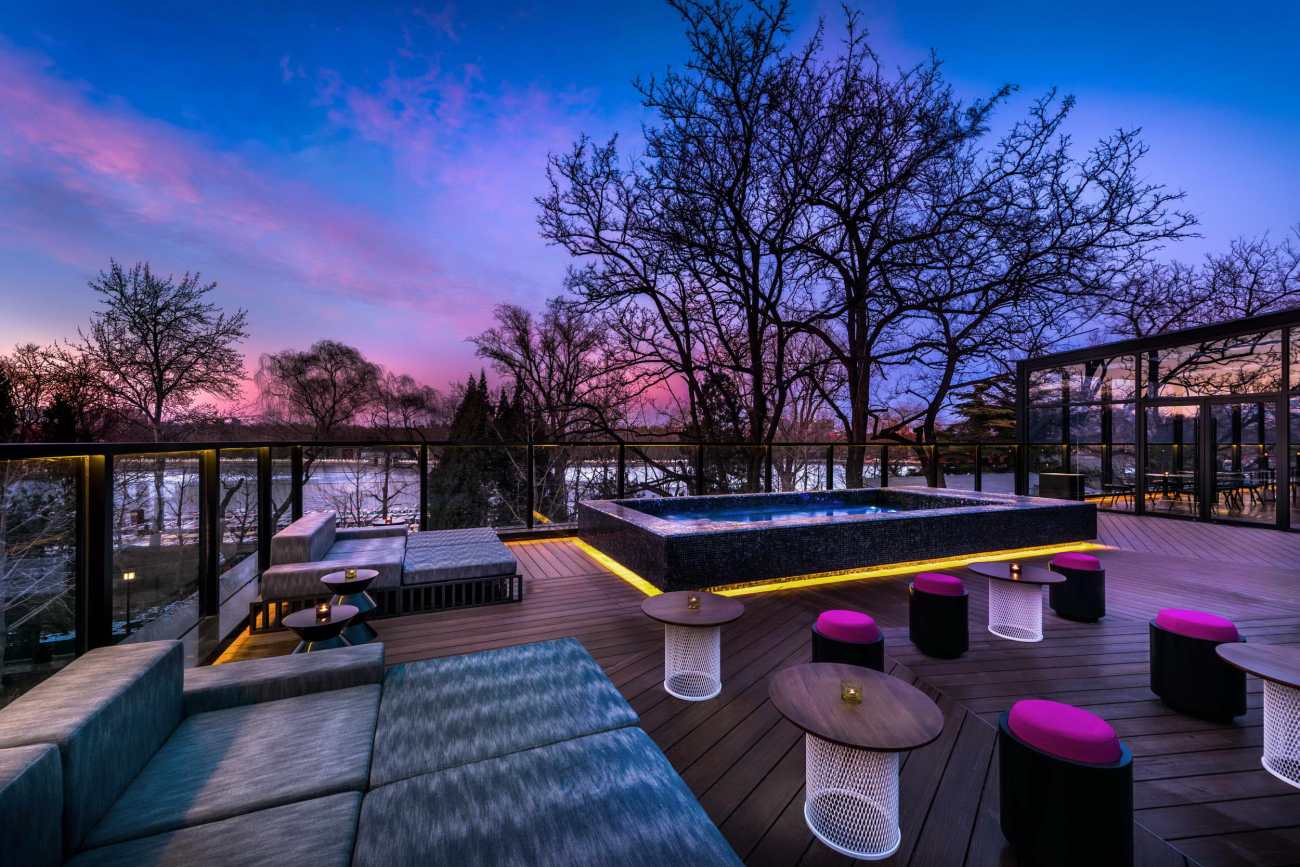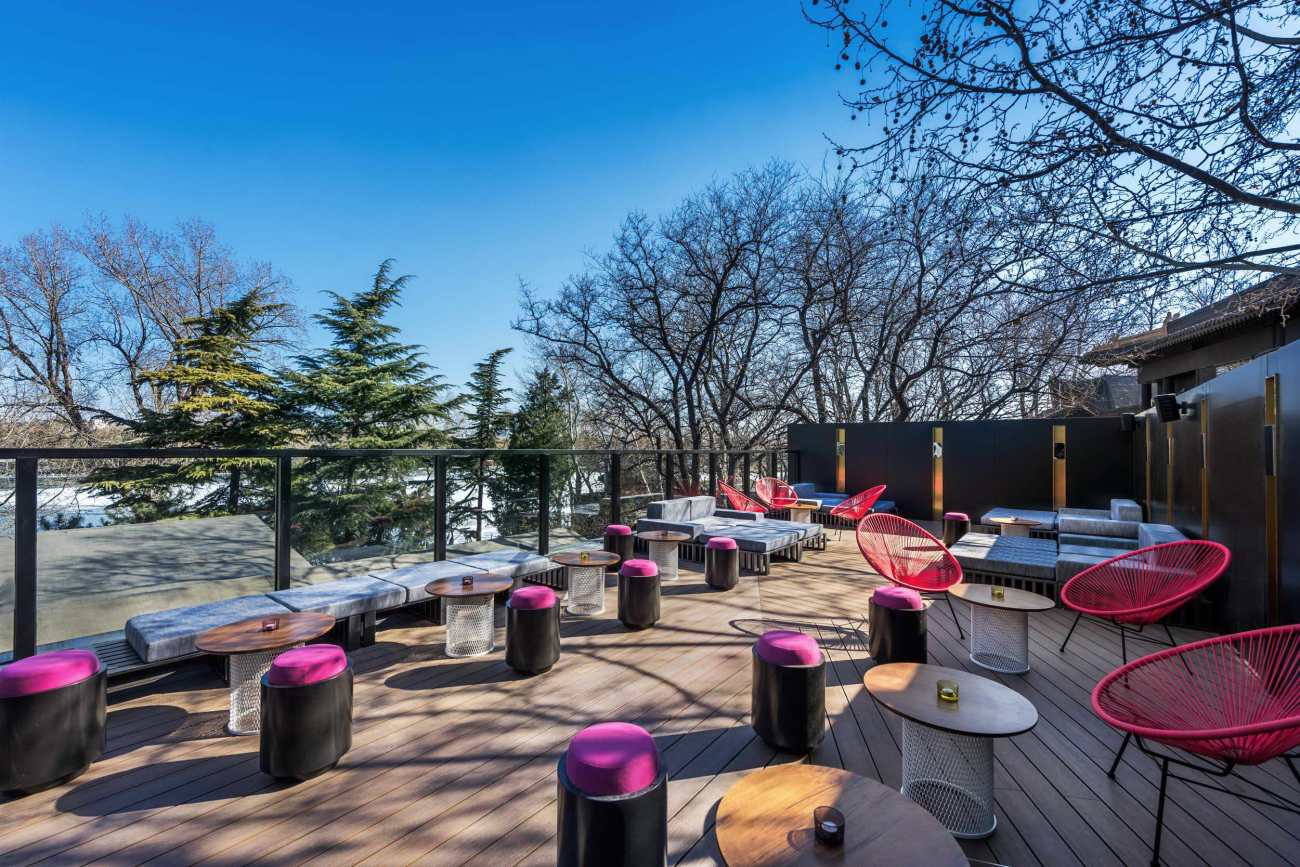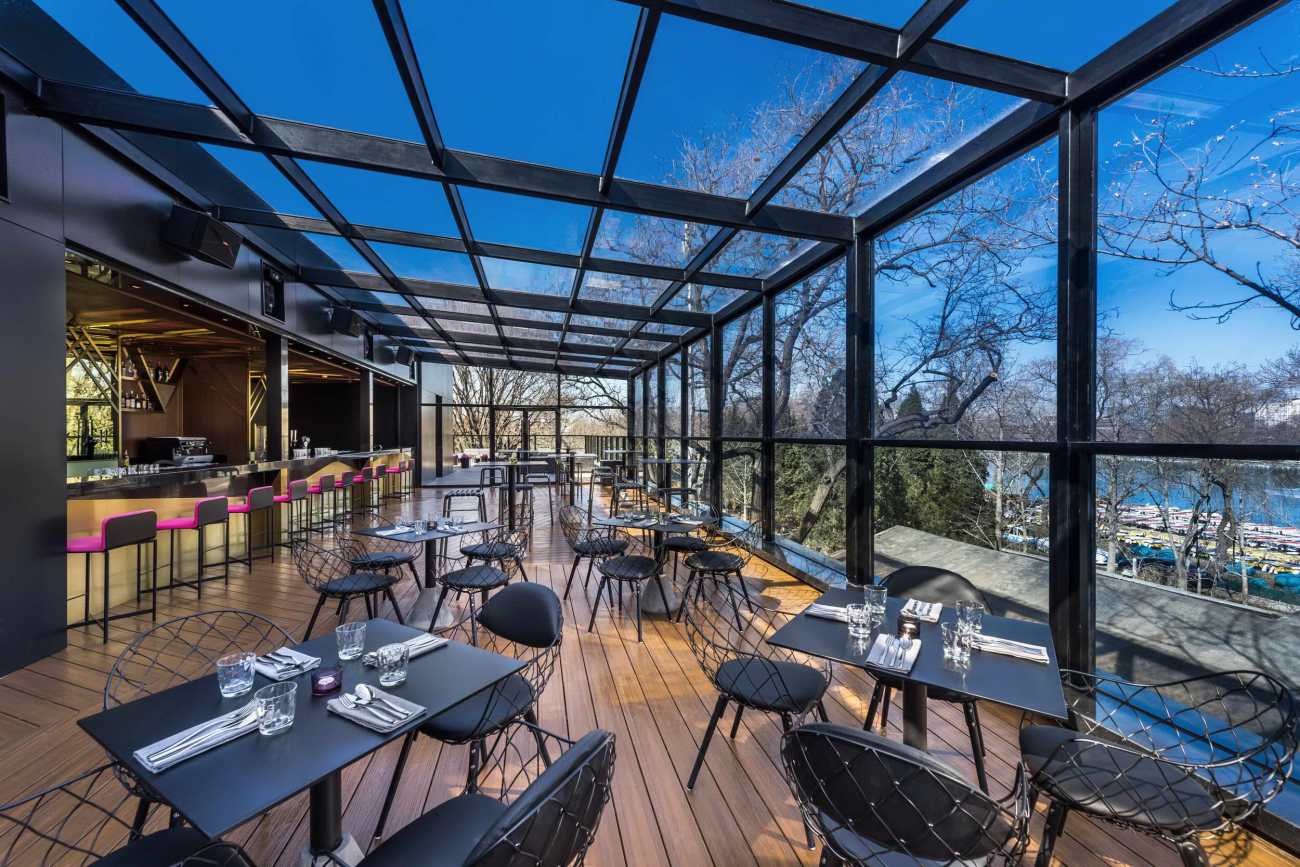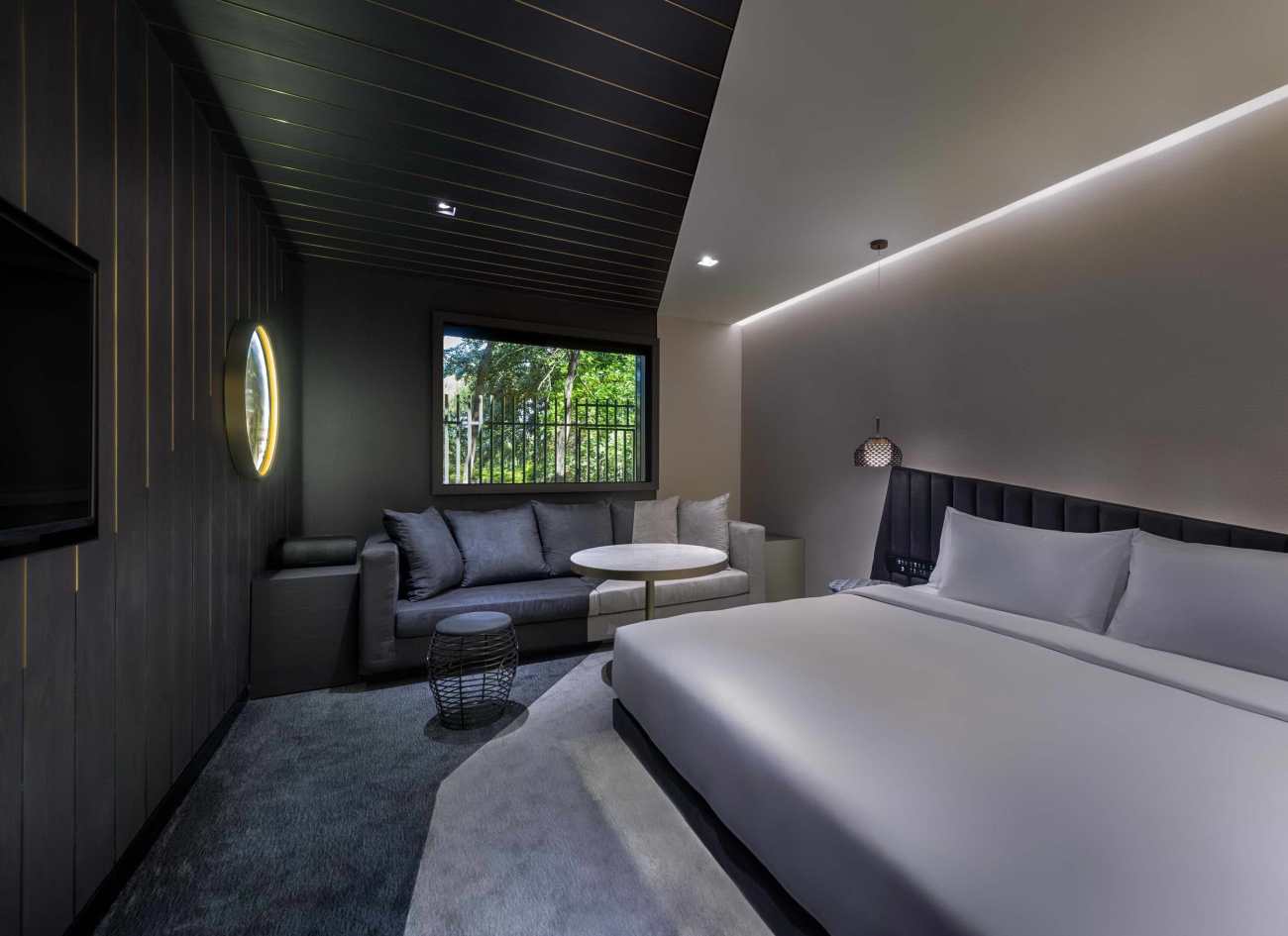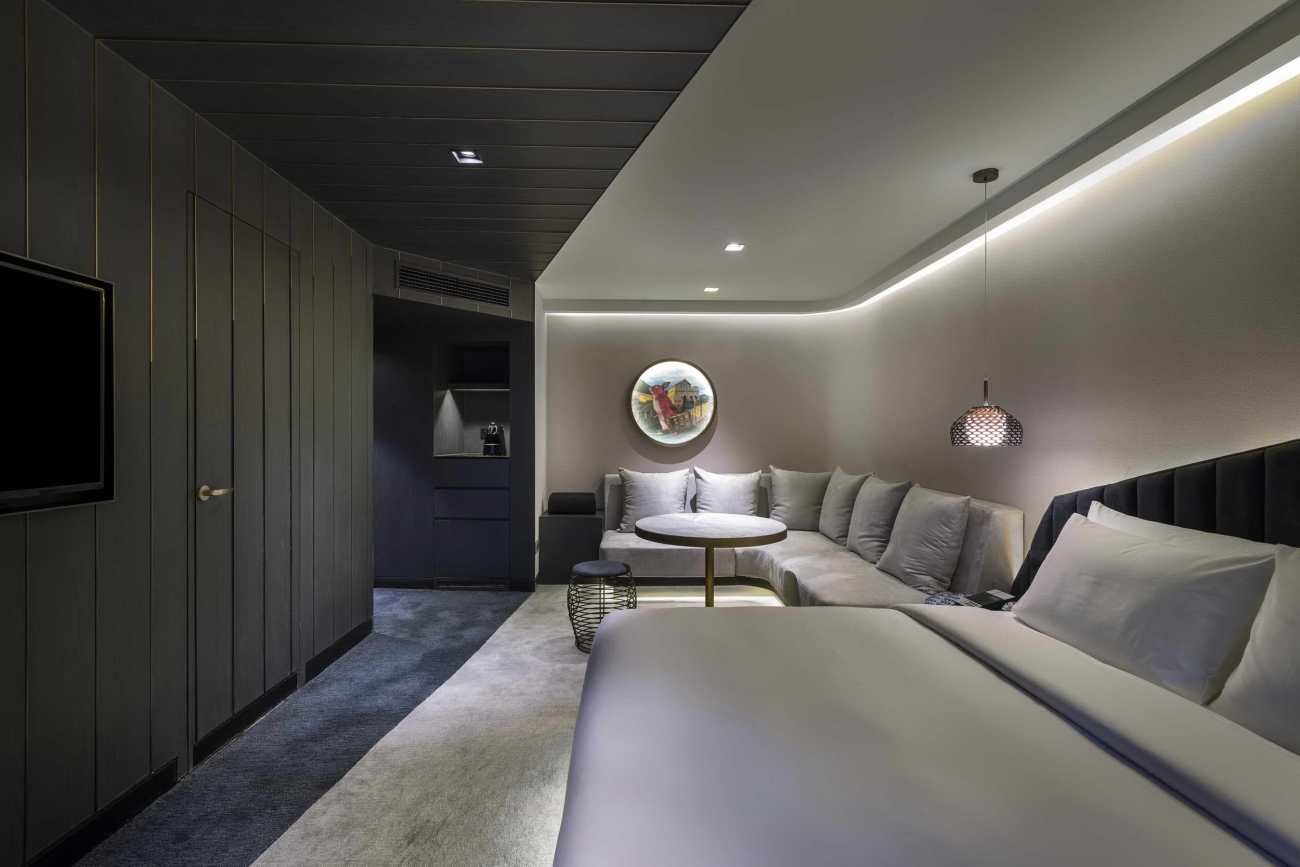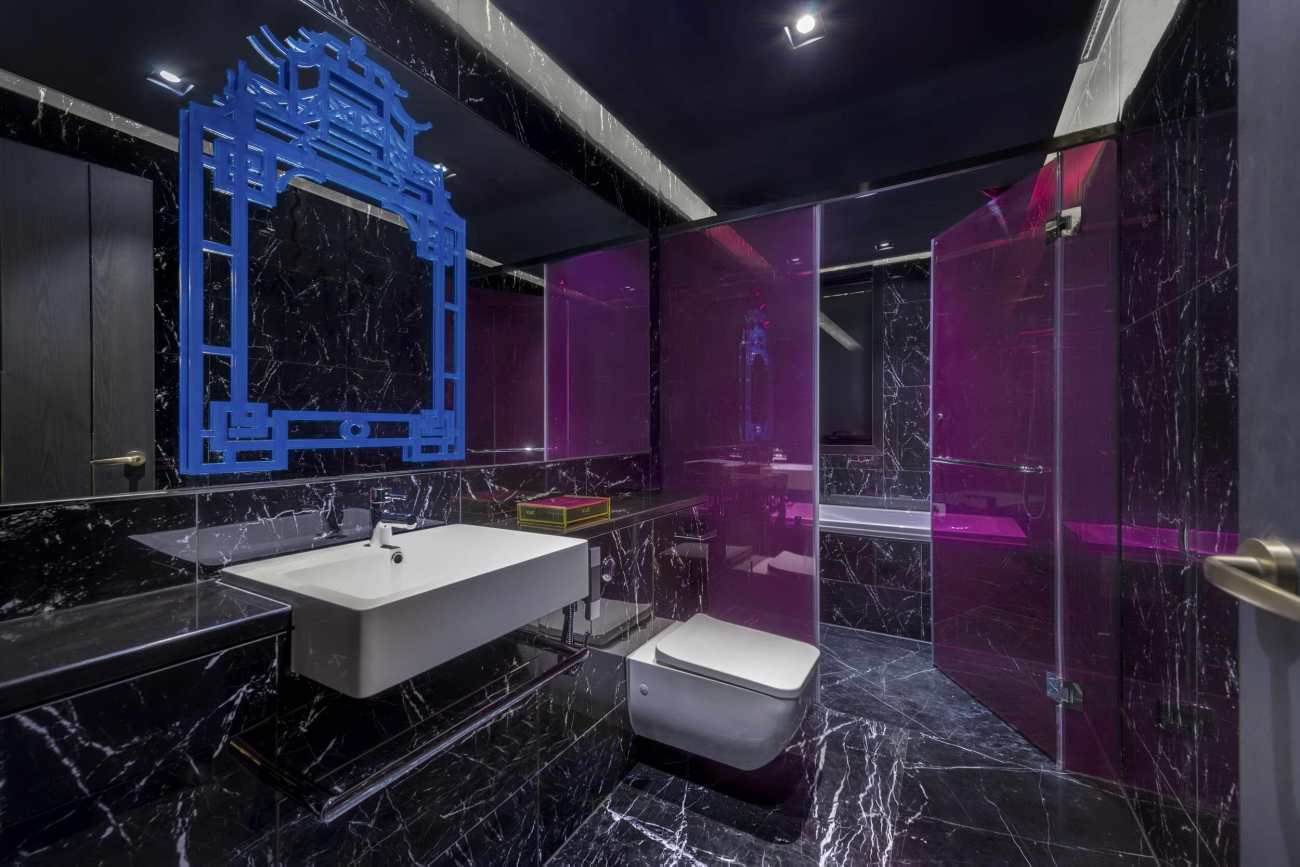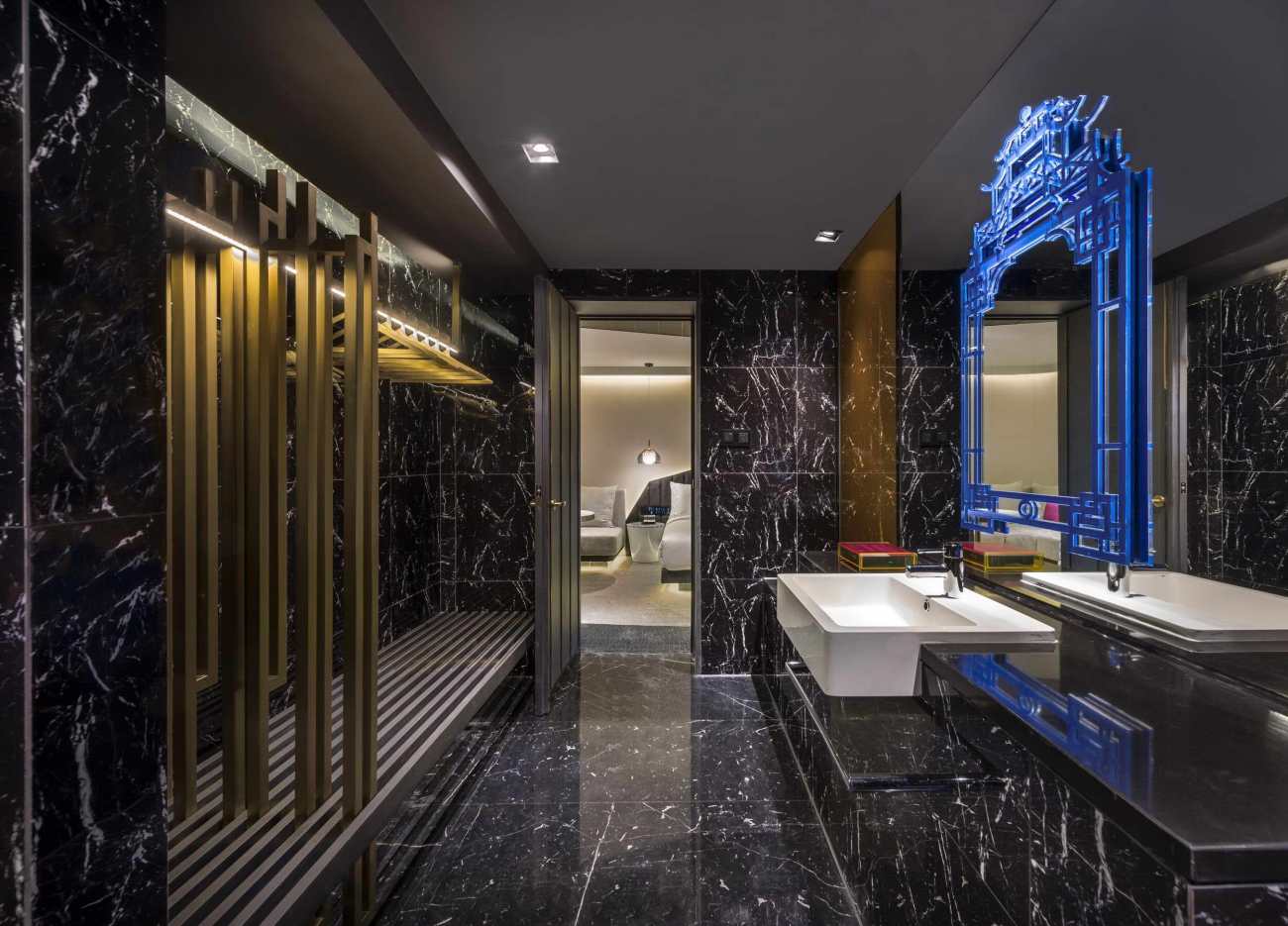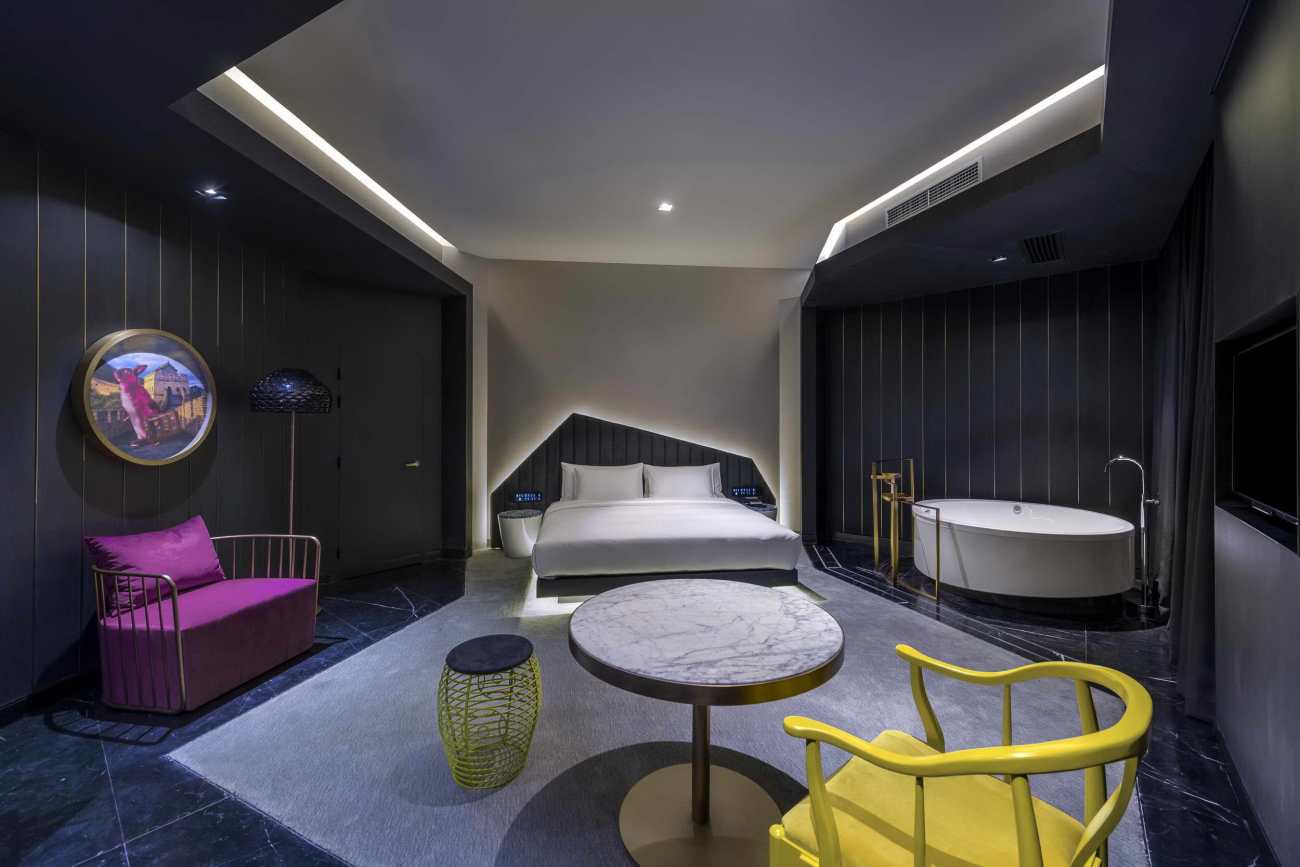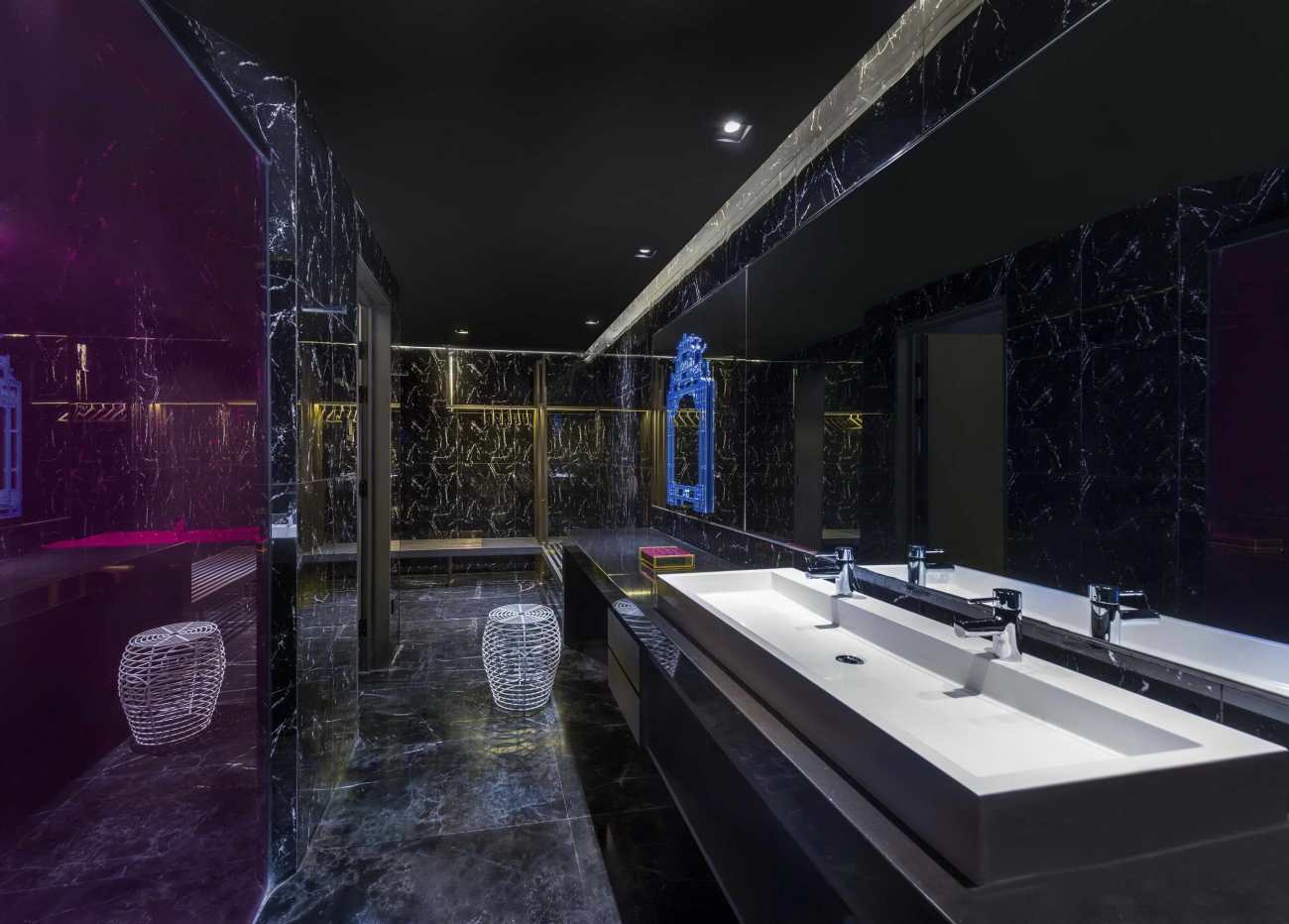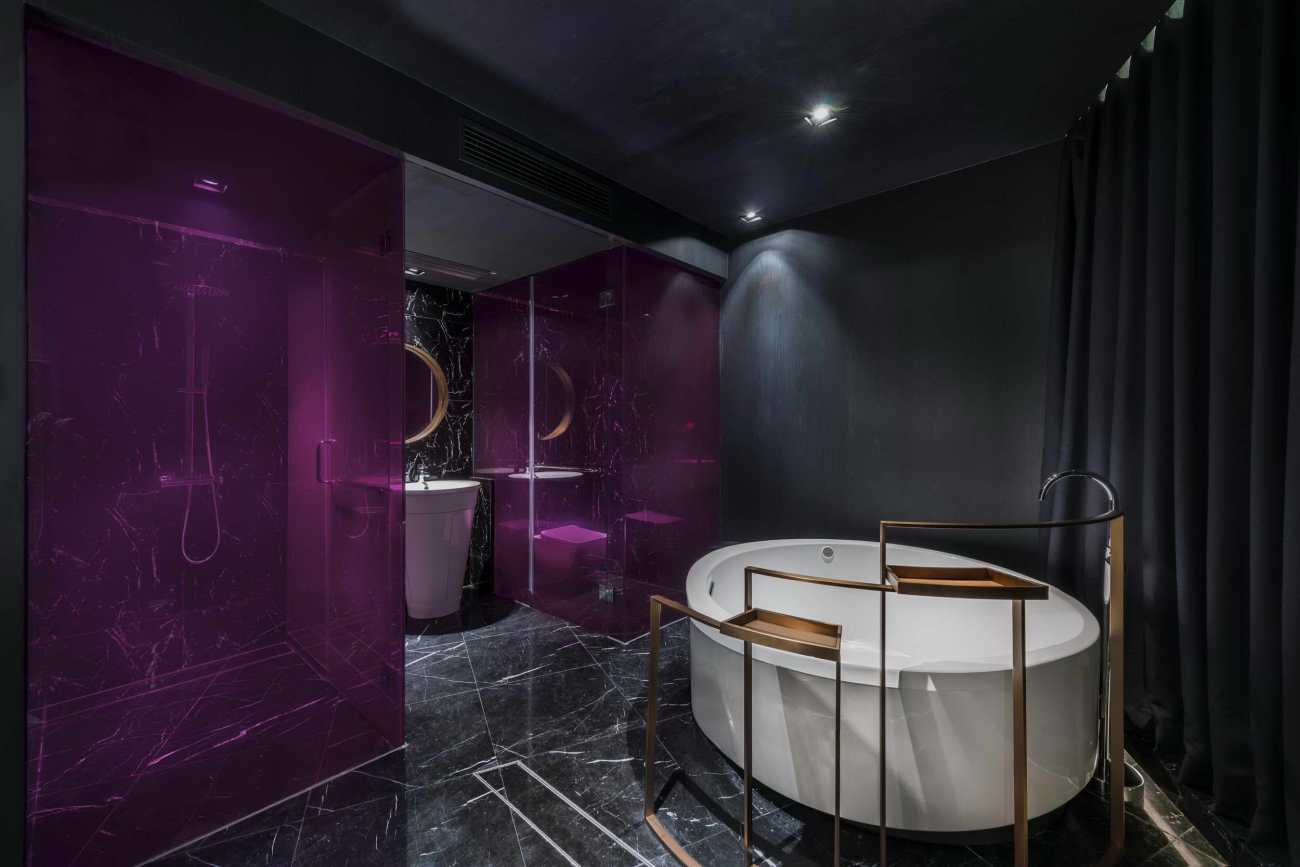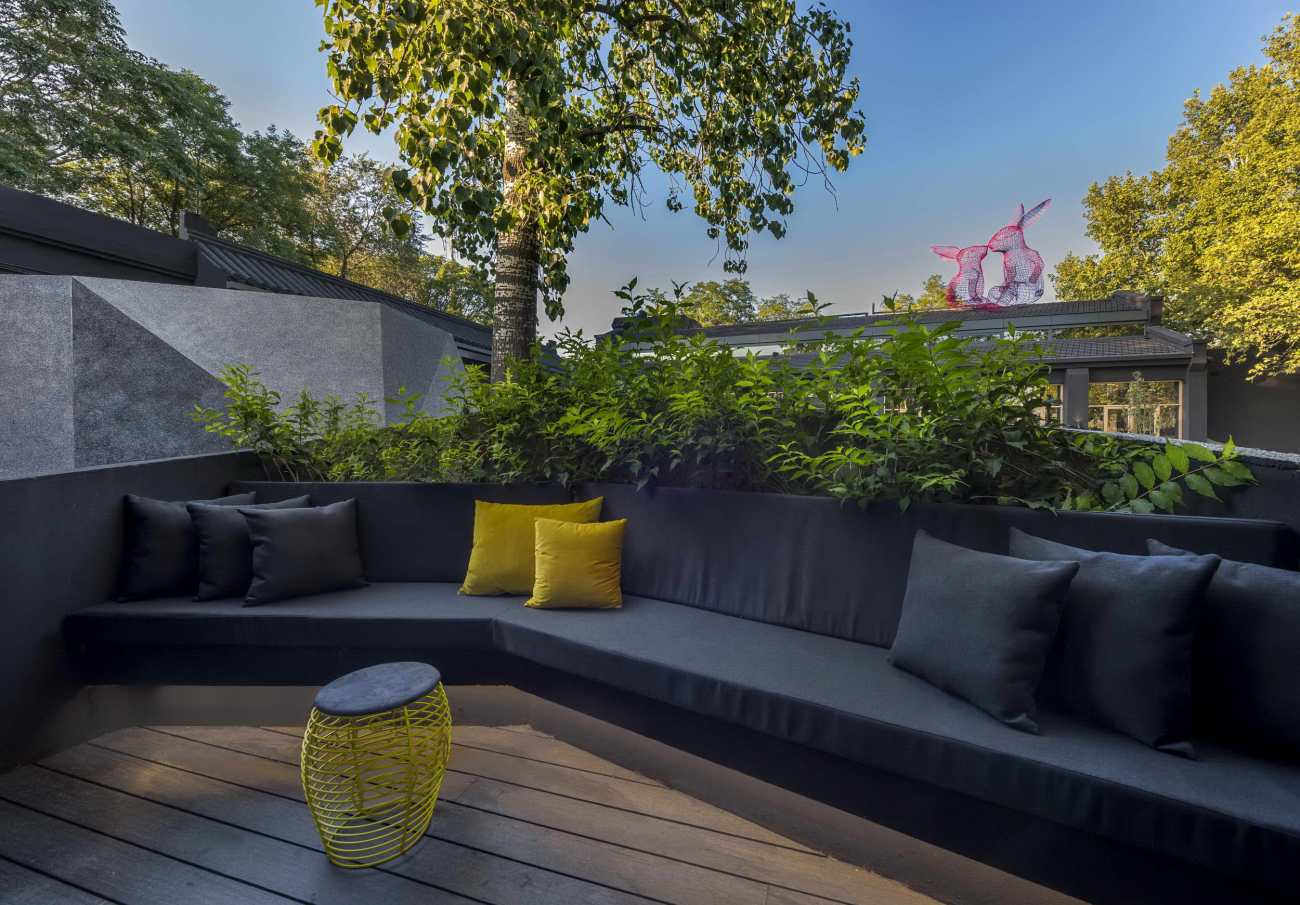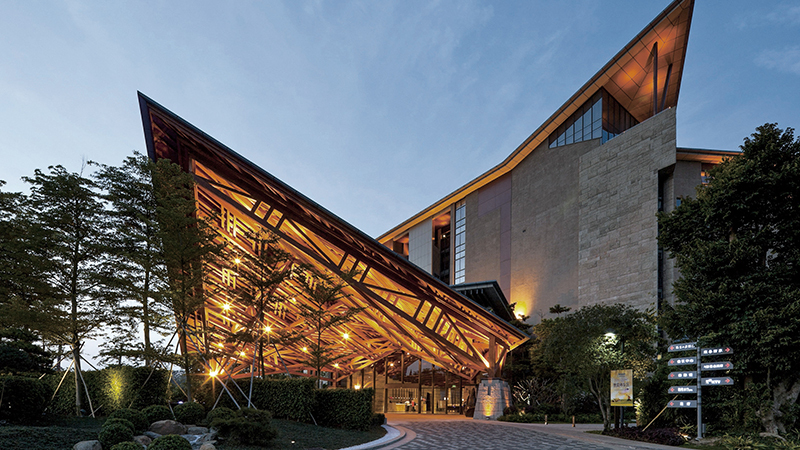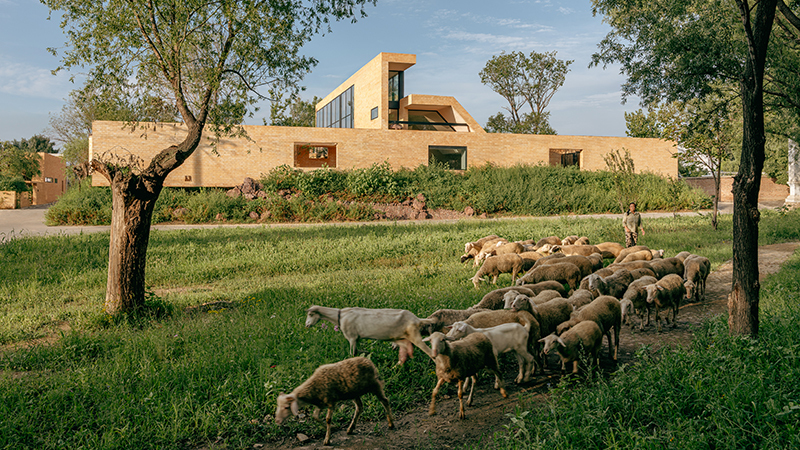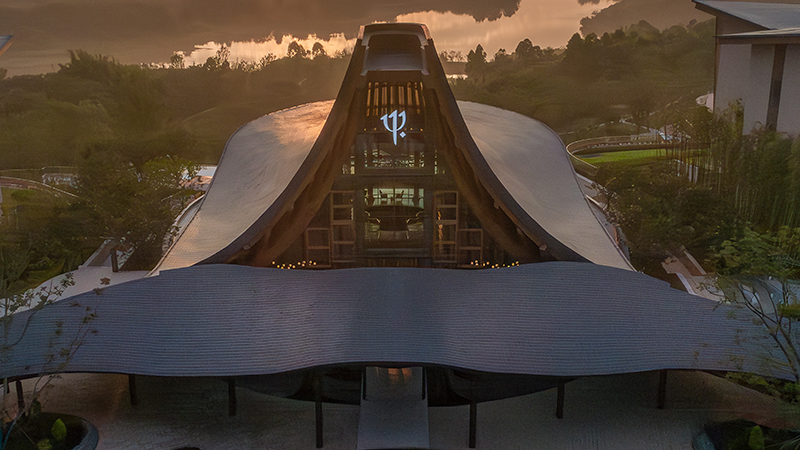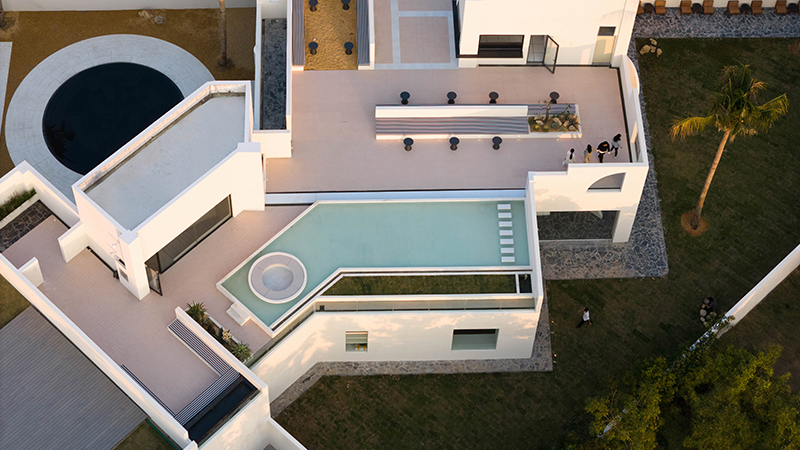| 公司: | Ministry of Design | 类型: | 建筑 |
|---|---|---|---|
| 地区: | 中国 | 标签: | 酒店 |
整体品牌概念
‘薇’酒店是桔⼦酒店旗下品牌,是本⼟⽂化逐渐国际化⽽衍⽣出的⾼端精品酒店品牌,旨在让客 ⼈真实感受到‘定制’的酒店服务。‘薇’酒店位于中国的⼀线城市,得天独厚的位置使得它可以 充分从当地的⽂化和背景中汲取养分,同时⼜与现代的设计理念和奇思妙想的设计⼿法相融合。为 了满⾜都市旅⾏者的需求,酒店采⽤许多现代的设计⼿法,结合了奇思妙想的艺术品设计以及美味的菜肴,打造出了舒适宜⼈的空间。北京后海‘薇’酒店的设计顾问 Ministry of Design 是来⾃新加 坡的国际知名设计⼯作室,他们负责了北京后海‘薇’酒店包括整体策划、品牌设计、室内设计与艺术创作的所有设计。
OVERALL CONCEPT OF THE BRAND
The VUE Hotel brand exemplifies the new wave of locally-rooted boutique hospitality experiences, a global cultural phenomenon now finding roots in China. “VUE” in French means “view” or “a way to see” and VUE hotels aspire to present a fresh way of “seeing” hospitality design and experiences. VUE’s DNA upends conventional Chinese notions of hospitality and is defined by 4 core pillars: 1. Encourages Socialising; 2. Transcendence of culture; 3. Delightful & Whimsical; 4. Relaxed & Inviting. Each bespoke VUE property will draw richly from the culture and heritage of its neighborhood, yet always transcending it with a contemporary and whimsical twist. Unapologetically modern in its approach, the brand embodies the desires of the urbane traveller; creating comfortable and inviting social spaces that are paired with intriguing art and innovative cuisine. With expansion planned for multiple properties in key cities across China, the VUE Hotel brand is pioneered by Wuhai, CEO of Orange Hotels Group and created by internationally acclaimed design studio Ministry of Design, who are responsible for the holistic strategy, branding and all design & art creation.
北京后海
‘薇’酒店 “薇”酒店的旗舰店位于北京后海的胡同区。它坐落在⻛景如画的后海湖边,毗邻后海公园以及历 史悠久的⽼北京胡同,胡同⾥⼀直有当地居⺠居住并保持着当年的⻛貌。酒店不远处则是著名的北京后海酒吧街。 作为⼀个改造项⺫,酒店整个园区是由⼀系列 50 年代的历史建筑组成,设计师并对这些建筑进⾏ 艺术处理和改造,成就了具有‘多⾯’的园区环境。客⼈可以从酒店园区内发掘到不同的空间,包 括⼀系列的园林景观,⼀个⾯向繁忙的胡同路的⾯包咖啡房,⼀个可以俯瞰后海的屋顶酒吧,设施⻬全的健⾝房以及⼋⼗多间客房和套房,其中⼀些房间还配有独⽴花园或者享有俯瞰后海的视野。
VUE HOUHAI, BEIJING VUE
Hotel’s first flagship property is located in Beijing, in the Hutong district of Houhai. The hotel compound sits on the edge of the picturesque Houhai lake, and neighbours a verdant public park, as well as historic Hutong houses which are still used by local inhabitants today. Located along Houhai’s banks are a district of bars and vibrant cafes. Undertaken as a major adaptive-reuse exercise, the hotel comprises a series of artistically transformed quasi-historic buildings from the 1950’s. This intriguing hotel compound invites you to explore its many facets where you will discover a series of landscaped gardens, a bakery café fronting the bustle of the Hutong streets, a signature restaurant in a warehouse, a rooftop bar overlooking the lake, a gym and over 80 rooms and suites, several with private gardens or with views overlooking the park or lake.
设计要点
建筑及景观设计 酒店院内的⼏栋建筑⻛格⼿法各不相同。尽管这⼏栋楼的主基调是中国传统建筑,但 不同建筑却有各⾃不同的装饰特点,包括⾮常传统的中式挑檐及檐⼝装饰,特⾊的脊 兽,富于雕塑感的阳台以及传统的回形窗棂。设计解决⽅案是通过⾊彩与景观来对这 些不同特⾊进⾏整合和处理。
设计师将所有的建筑都刷成炭⿊⾊,同时⽤⾮常现代的⾦漆将具有传统特⾊的建筑细 节/雕塑强调出来。这些⾦漆的细节在深灰的背景中凸显闪耀,⽤⼀种特别的⽅式对传 统的建筑细节进⾏‘编目’。 当客⼈进⼊到酒店园区中,这些细节‘条目’便会逐渐 引起注意,从⽽使⼈注意到传统建筑形式和现代的差别:这种微妙的并置强调了任何 改造设计都会带来的巨⼤⽭盾。
从概念上讲,设计利⽤充分所有建筑之间的空间,并依此把整个酒店园区联系起来, 打造出⼀个整体的环境体验。园区的景观和地⾯在构图上采⽤⼀种‘冰裂纹’的图 案,这种图案最初来源与中式屏⻛。图案延伸并被⽴体化,它在建筑附近延续并上 升,从⽽包裹打造出了客房专属阳台或者客房内庭院空间。
MAJOR DESIGN TOUCHPOINTS
ARCHITECTURE & LANDSCAPE The hotel compound comprises a series of quasi-historic buildings from the 1950’s, with a variety of architectural styles and approaches. Although they were designed primarily in the Chinese vernacular, the different buildings span a range of ornamentation from highly decorative roof eaves, characterful gargoyles, sculptured balconies and latticed window frames, to pared-back jack roofs and plain brick work wall finishes. Our design approach has been to unify this diverse collection through colour and landscaping.
All the buildings are conceptually draped over with a dark charcoal grey coat of paint, upon which key architectural details have been highlighted in a contemporary gold patina. These featured elements shimmer against the dark backdrop and their prominence suggests an informal “cataloguing” of key architectural details. As guests explore the compound, this “catalogue” of details gradually brings into focus the distinction between the historical versus the contemporary: a subtle juxtaposition, which highlights the rich tension arising from any adaptive reuse design.
Conceptually, the design harnesses all the “left-over” spaces in-between each building, to tie the compound into a single holistic experience. These in-between spaces are treated graphically with an “ice-ray” lattice pattern inspired by traditional Chinese screens. Treated three-dimensionally, hardscaped floors and passageways rise to become private balconies or garden enclosures.
 | 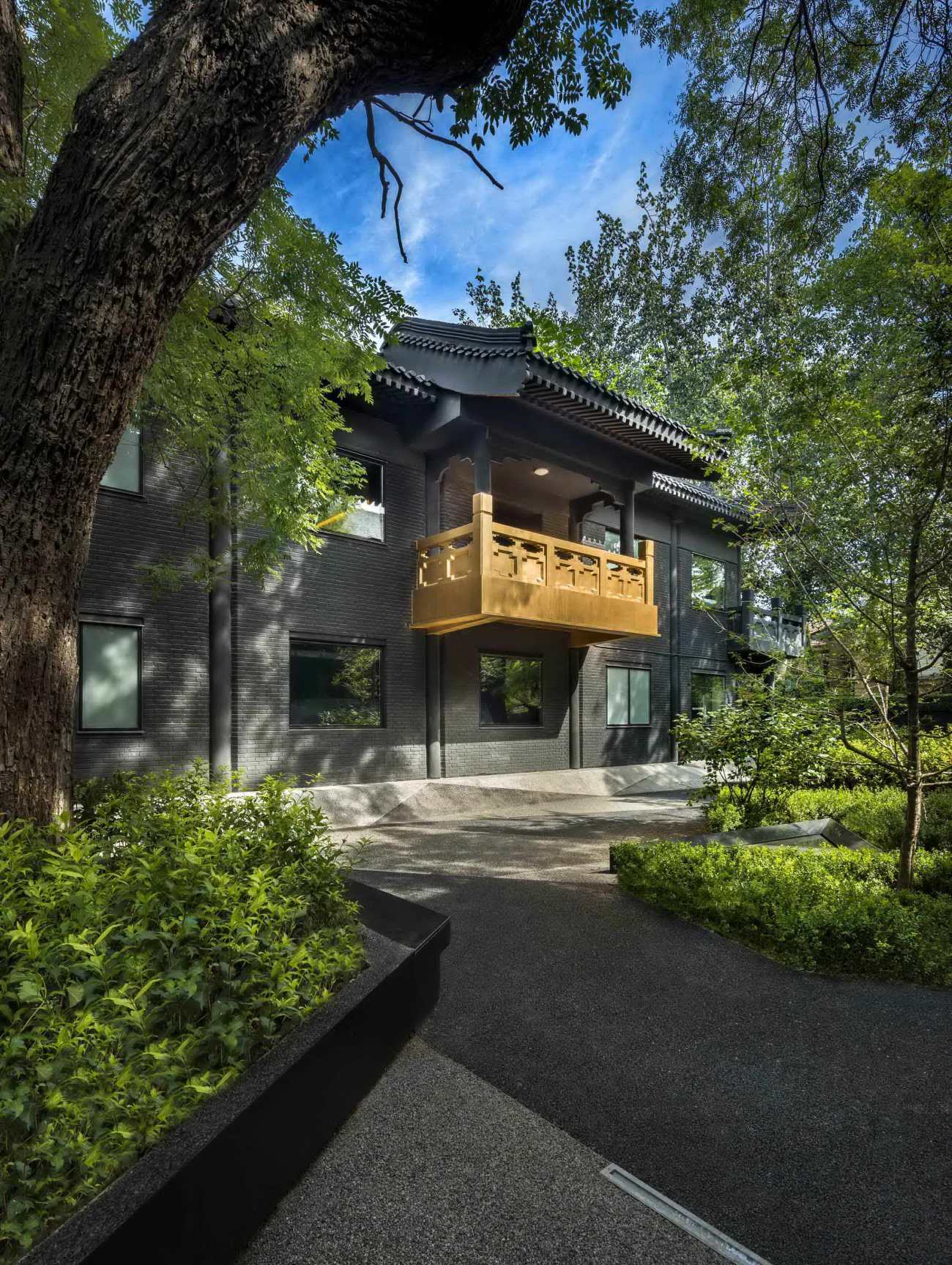 |
咖啡厅及接待⼤厅的设计
抵达酒店并前往接待⼤厅,客⼈的第⼀个遇到的是‘薇’酒店的共享社交空间:FAB 咖啡⾯包房。这是个休闲并充满活⼒的空间,它正⾯喧嚣的⽼北京胡同,⻅证了当地 的⽇常⽣活及⽂化氛围。FAB 拥有室内及室外就餐位,是享⽤早餐,下午茶以及品尝 咖啡的理想场所。室内的设计借鉴了它所处环境的道路铺装,材料选⽤及⾊调。不同 的座位组合及家具款式搭配得当,为 FAB 的客⼈提供了既多样⼜富于吸引⼒的体验.
接待⼤厅对于住宿的客⼈来说是第⼀个重要的体验。我们致⼒于打造新鲜且私密,休 闲但舒适的⼊住登记空间。客⼈先要经过⼀个礼宾区,在那⾥体验到‘薇’酒店的第 ⼀个特⾊装置艺术品,然后进⼊到接待厅,接待厅有酒店的彩⾊线路图,以及夸张的 戏剧化的多主题空间设计。
FAB CAFÉ & RECEPTION
Upon arrival and enroute to the Reception, the guest experience first begins at one of VUE Hotel’s social hubs: the FAB café and bakery. This casual and vibrant venue fronts the buzzy Hutong main road where scenes of daily local life and culture can be witnessed. With both terrace alfresco as well as indoor seating, FAB is the perfect place for breakfast, a quick snack or a rousing cup of coffee. The interior design approach draws from characteristics of the street front in its use of materials and colour accents. A wide range of seating nooks and furniture allows the FAB experience to feel varied and engaging.
The Reception is the first experience exclusive to overnight guests. Intimate and personal, the check-in experience is casual but comfortable. Guests pass a concierge point where the property’s first feature installation artwork is placed and into the Reception, where the property’s signature colour scheme and dramatic spatial design themes are manifested.
粉兔餐厅及屋顶天吧设计
在最初客房概念构思阶段,‘薇’酒店的品牌策划决定引⼊创新的空间设计,同时保 要保证酒店的舒适度可以和市场上最优秀的酒店竞争。设计师也希望能从现代设计⼿ 法与当地传统⽂化印象中获得平衡,最终完成的空间令⼈感到惊奇有趣却⼜似曾相 识。在客房中,设计师通过颜⾊,⾊调以及材质将空间进⾏分割,⽽每间客房艺术品 ⼜作为线索,延续了酒店的总体概念。客房内夸张的洗浴空间和宁静的睡眠空间相互 弥补。标准客房之外,还提供有套房及花园房,它们通过宽敞的起居与茶歇空间,超 ⼤的卫⽣间及室外休闲区,进⼀步延伸了客户的居住体验。
健⾝房是总体设计⽅案的延续,同时使得整个酒店的戏剧和活⼒更上⼀级。镜⼦和格 栅等元素打造出了⼀个更加有利于健康和锻炼的空间。
THE PINK RABBIT RESTAURANT AND ROOFTOP MOON
Housed at the Lakeside-edge of the hotel compound in a former warehouse building, VUE Hotel’s signature restaurant and rooftop bar offers an extensive tapas sharing menu and cocktails/liquor selection.
Upon approaching the Pink Rabbit from the adjacent courtyard, guests encounter a whimsical installation atop the building’s roof of 2 gigantic wireframe rabbits.
The Pink Rabbit’s casual but sophisticated atmosphere plays itself out in the interior design. The exposed metal & wood trusses, open display kitchen, lounge style seating paired with a feature bar and DJ counter, contribute to the overall upbeat vibe. A series of private dining rooms and quiet garden dining zone provide opportunities for exclusive entertaining, whilst the rooftop Moon Bar and Jacuzzi pool offer a treetop alfresco experience, with full views to the picturesque Houhai lake and park.
客房及健⾝房设计
在最初客房概念构思阶段,‘薇’酒店的品牌策划决定引⼊创新的空间设计,同时保 要保证酒店的舒适度可以和市场上最优秀的酒店竞争。设计师也希望能从现代设计⼿ 法与当地传统⽂化印象中获得平衡,最终完成的空间令⼈感到惊奇有趣却⼜似曾相 识。在客房中,设计师通过颜⾊,⾊调以及材质将空间进⾏分割,⽽每间客房艺术品 ⼜作为线索,延续了酒店的总体概念。客房内夸张的洗浴空间和宁静的睡眠空间相互 弥补。标准客房之外,还提供有套房及花园房,它们通过宽敞的起居与茶歇空间,超 ⼤的卫⽣间及室外休闲区,进⼀步延伸了客户的居住体验。
健⾝房是总体设计⽅案的延续,同时使得整个酒店的戏剧和活⼒更上⼀级。镜⼦和格 栅等元素打造出了⼀个更加有利于健康和锻炼的空间。
GUEST ROOMS AND GYM
When conceptualizing the essence of its hotel rooms, the brand decided to celebrate innovative spatial design but pair it with a level of creature comforts that would rival the best design hotels in the market. High on the agenda was also a desire to balance an unapologetically contemporary design approach with locally inspired culture and imagery. The resulting rooms are whimsically surprising but yet familiar. Spaces are unexpectedly divided with the use of colours, tones and materials, whilst installation art in every room continue the hotel’s overarching narrative. Dramatic bath spaces complement restful sleeping spaces. Beyond the standard rooms, the suites and garden rooms extend the guest experience with generous living and dining spaces, oversized bathrooms and alfresco lounge areas.
The gym is designed to extend the overall design scheme and bring it to the next level of drama and vibrancy. Mirrored surfaces and latticework create a space conducive to health and wellness.
装置及房间艺术品
每个‘薇’酒店的设计都是围绕着它的地域及⽂化进⾏展开的。对北京后海‘薇’酒 店来说,设计的灵感来源于后海湖以及在周围栖息的动物们。在我们想象中,‘薇’ 酒店所处的环境应该使它周围的栖息动物有⼀个神奇且具有魔⼒的奇妙变化。这些可 爱的动物们,狐狸,兔⼦,⿅从单纯的动物转化成更加拟⼈化的⾓⾊,就像动画⽚ 中,动物都被赋予⼈的特质⼀样。在转化成⼈的过程中,这些动物还被赋予了新的特 质,它们对周遭世界充满好奇,并像旅⾏者⼀样开始探索湖边有趣的景点并最终抵达 北京最具标志性的历史古迹——⻓城,故宫,天坛等.
这些动物分布在酒店园区中和客房⾥。另外,设计师还设计了另外⼀系列艺术品,它 们更着重讲述‘中国⽂化的进化’,客⼈们可以在电梯厅及⾛廊等公共空间发现这样 的艺术品。
ART INSTALLATION AND ROOM ART
Each VUE property is designed around a central narrative inspired by its locale or culture. For VUE Houhai Beijing, the narrative drew inspiration from the lake and its animal inhabitants. In our imaginings, the presence of VUE in the Houhai neighbourhood has a magical and whimsical transformative effect on the animal inhabitants. These friendly animals (foxes, rabbits, deer) are transformed anthropomorphically from mere animals to become more human-like, in the same way animals in cartoons often adopt human personas. In becoming more human-like, the animals also begin to cultivate a sense of curiosity of the world around them and like “tourists”, begin to explore the attractions around the lake and eventually to iconic historic sites around Beijing – the Great Wall, the Forbidden City”.
These art installations are dotted throughout the compound and are also found in each room. Other art installations, which parallel this narrative but focus more keenly on the theme of the “transcendence of Chinese culture” can be found in other public spaces such as lift lobbies and corridors.
Project: VUE HOTEL
Ministry of Design Design : Colin Seah, Kevin Leong, Joyce Low, Ruth Chong, Sarah Conceicao, Richard Herman, Tasminah Ali, Syazwani Wagiman, Rais Rahman, Patricia Segado, Angie Ng, Jascha Oakes, Tiang Yuping, Norberto Olegario, Mior Hasan, Don Castenada, Arnel Anonuevo
Scope of Design: Brand Strategy, Architectural Additions, Landscape, Interior, Signage, Collaterals, Art, Product & Furniture Design, Art direction of Uniform & Website
Land area: 7,500 sqm
Built in GFA (Rooms & Public): 10,000 sqm
The Pink Rabbit Restaurant: 630sqm
Moon Bar: 396sqm ,124 seats
Construction duration : April 2015 to April 2017
Photography: Edward Hendricks
更新日期:2020-12-04 12:58:10
非常感谢 Ministry of Design 带来的精彩项目, 查阅更多Appreciations towards Ministry of Design for sharing wonderful work on hhlloo. Click to see more works!
